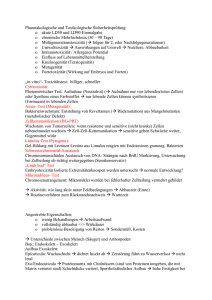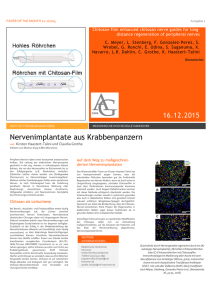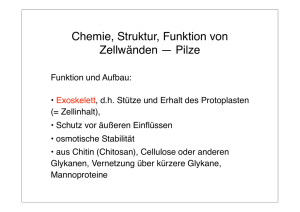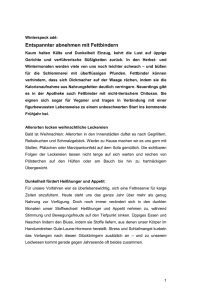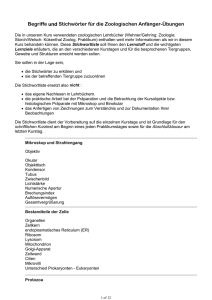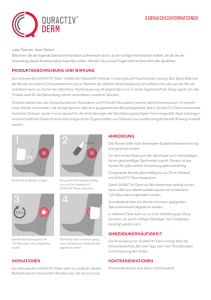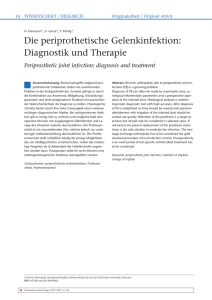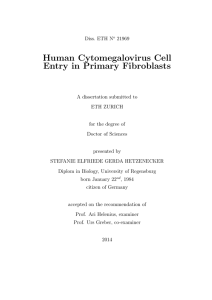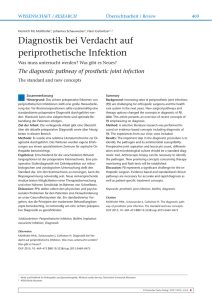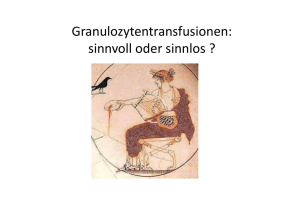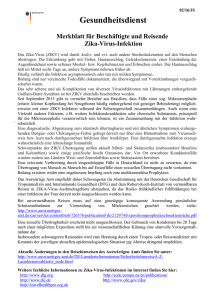V Zusammenfassung
Werbung
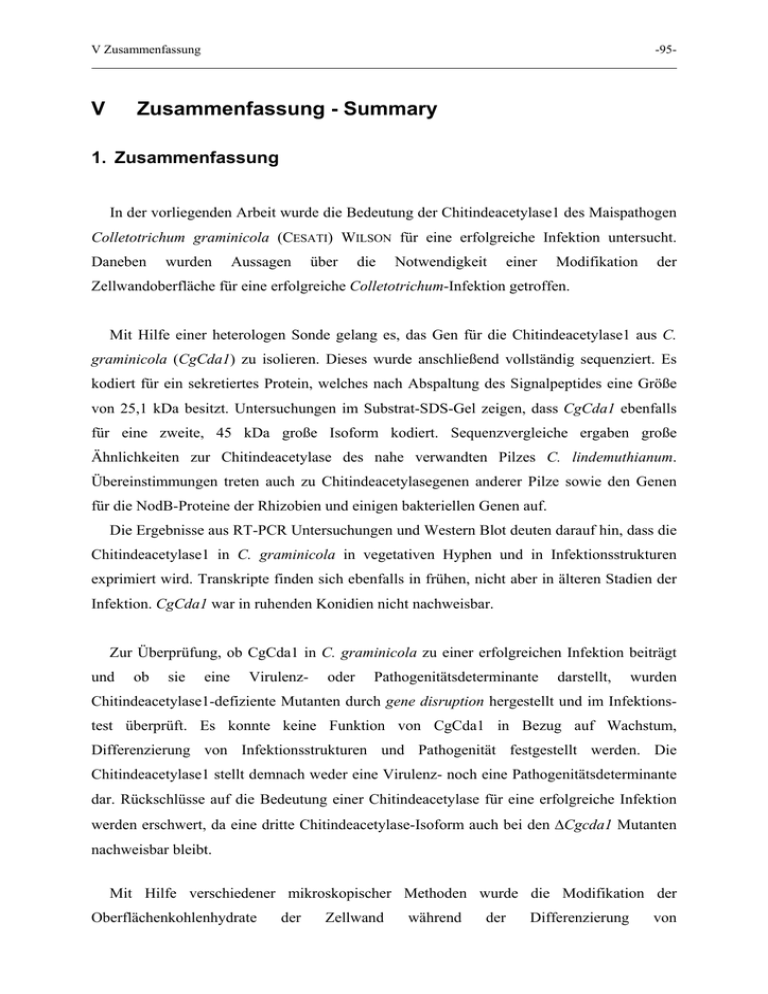
V Zusammenfassung V -95- Zusammenfassung - Summary 1. Zusammenfassung In der vorliegenden Arbeit wurde die Bedeutung der Chitindeacetylase1 des Maispathogen Colletotrichum graminicola (CESATI) WILSON für eine erfolgreiche Infektion untersucht. Daneben wurden Aussagen über die Notwendigkeit einer Modifikation der Zellwandoberfläche für eine erfolgreiche Colletotrichum-Infektion getroffen. Mit Hilfe einer heterologen Sonde gelang es, das Gen für die Chitindeacetylase1 aus C. graminicola (CgCda1) zu isolieren. Dieses wurde anschließend vollständig sequenziert. Es kodiert für ein sekretiertes Protein, welches nach Abspaltung des Signalpeptides eine Größe von 25,1 kDa besitzt. Untersuchungen im Substrat-SDS-Gel zeigen, dass CgCda1 ebenfalls für eine zweite, 45 kDa große Isoform kodiert. Sequenzvergleiche ergaben große Ähnlichkeiten zur Chitindeacetylase des nahe verwandten Pilzes C. lindemuthianum. Übereinstimmungen treten auch zu Chitindeacetylasegenen anderer Pilze sowie den Genen für die NodB-Proteine der Rhizobien und einigen bakteriellen Genen auf. Die Ergebnisse aus RT-PCR Untersuchungen und Western Blot deuten darauf hin, dass die Chitindeacetylase1 in C. graminicola in vegetativen Hyphen und in Infektionsstrukturen exprimiert wird. Transkripte finden sich ebenfalls in frühen, nicht aber in älteren Stadien der Infektion. CgCda1 war in ruhenden Konidien nicht nachweisbar. Zur Überprüfung, ob CgCda1 in C. graminicola zu einer erfolgreichen Infektion beiträgt und ob sie eine Virulenz- oder Pathogenitätsdeterminante darstellt, wurden Chitindeacetylase1-defiziente Mutanten durch gene disruption hergestellt und im Infektionstest überprüft. Es konnte keine Funktion von CgCda1 in Bezug auf Wachstum, Differenzierung von Infektionsstrukturen und Pathogenität festgestellt werden. Die Chitindeacetylase1 stellt demnach weder eine Virulenz- noch eine Pathogenitätsdeterminante dar. Rückschlüsse auf die Bedeutung einer Chitindeacetylase für eine erfolgreiche Infektion werden erschwert, da eine dritte Chitindeacetylase-Isoform auch bei den ∆Cgcda1 Mutanten nachweisbar bleibt. Mit Hilfe verschiedener mikroskopischer Methoden wurde die Modifikation der Oberflächenkohlenhydrate der Zellwand während der Differenzierung von V Zusammenfassung -96- Infektionsstrukturen analysiert. Dabei wurden sowohl in vivo- als auch in vitro-differenzierte Strukturen in die Analyse einbezogen. Eine Modifikation der Zellwand während der Penetration in das Wirtsgewebe kann gezeigt werden. Das Verhältnis von Chitin zu Chitosan ändert sich dabei mit der Penetration ins Wirtsblatt. Auf der Zellwandoberfläche des Keimschlauches konnten beide Kohlenhydrate nachgewiesen werden. In der äußeren Appressorienwand dominiert Chitin, in der inneren Appressorienwand Chitosan. Die Oberfläche von Infektionsvesikel und primären intrazellulären Hyphen wird von Chitosan dominiert. Chitin kann innerhalb des Blattes nur am Apex penetrierender Hyphen nachgewiesen werden. Bezüglich der Kohlenhydratverteilung konnten keine Unterschiede zwischen Infektionsstrukturen auf künstlichen Keimunterlagen und den auf und in den Pflanzen gebildeten Strukturen festgestellt werden. Die Inaktivierung der Chitindeacetylase1 in C. graminicola hat keine Auswirkungen auf die Verteilung von Chitin und Chitosan in der Zellwand der Infektionsstrukturen. Die Transformante mit ektopisch integriertem knock-out Vektor (Tekt 24) zeigt im Substratgel Aktivitätsbanden aller drei Chitindeacetylase-Isoformen und infizierte erfolgreich Maispflanzen. Mit Hilfe der Fluoreszenzmarkierung konnte Chitosan auf der Oberfläche der Keimschläuche nachgewiesen werden. Auf der Oberfläche der Infektionsvesikel dieser Transformante war dagegen weder Chitosan noch Chitin nachweisbar. Eine Modifikation der Infektionsstrukturen bei der Penetration durch Umwandlung von Chitin in Chitosan scheint demnach für eine erfolgreiche Infektion nicht notwendig zu sein. Der Schwerpunkt anschließender Arbeiten sollte auf der Untersuchung der zweiten Chitindeacetylase in C. graminicola liegen. Die Erzeugung von Doppelmutanten eröffnet neue Möglichkeiten, die Bedeutung Deacetylierung von Chitin in C. graminicola zu analysieren. 2. Summary In this study the role of chitin deacetylase in modification of surface carbohydrates of fungal infection structures of the maize pathogen Colletotrichum graminicola (CESATI) WILSON was examined. The necessity of the conversion of chitin to chitosan for successful Colletotrichum-infection has been discussed. V Zusammenfassung -97- A heterologous probe was used to isolate the gene for chitin deacetylase1 (CgCda1) of C. graminicola. This gene was sequenced subsequently. It encodes a secreted protein with a deduced molecular weight of 25,1 kDa after cleavage of the signal peptide. Investigations using substrate-inclusion SDS-PAGE showed that CgCda1 encodes a second isozyme with a molecular weight of 45 kDa. The comparison of different sequences shows high similarity to the chitin deacetylase from the related fungus C. lindemuthianum. There are also significant similarities to genes of chitin deacetylases from other fungi, the genes of rhizobial NodB proteins and some bacterial genes. Results from RT-PCR studies and Western Blot indicate that chitin deacetylase1 of C. graminicola is expressed in vegetative hyphae and infection structures. Transcrips were found in early but not in older states of infection. There was no evidence of CgCda1 transkripts in dormant conidia To check whether CgCda1 is necessary for successful infection and whether it represents an important virulence or pathogenity determinant, mutants with an inactivated CgCda1 gene were generated by gene disruption and tested in infection studies. No evidence for a role of CgCda1 in growth, differentiation of infection structures and pathogenity was found. The chitin deacetylase1 does not represent a virulence or pathogenity determinant. It was difficult to assess the importance of chitin deacetylation for successful infection because a third chitin deacetylase isozyme is still active in the ∆Cgcda1 mutants. The modification of carbohydrates of the cell wall during the differentiation of infection structures was analysed by different microscopical techniques. In vivo- and in vitrodifferentiated infection structures were analysed. The relation of chitin and chitosan changed during the penetration of host tissue. Chitosan and chitin are cell wall components of germ tubes. Chitin was detectable in the outer appressorial wall and chitosan was prominent in the inner appressorial wall. Importantly, Chitosan but not chitin is the surface carbohydrate in infection vesicles. Consequently a modification of cell wall during penetration of host tissue can be shown. There were no differences between infection structures on artificial or natural surfaces. Inactivation of chitin deacetylase1 in C. graminicola had no effect on the specific distribution of chitin and chitosan in the cell wall of infection structures. V Zusammenfassung -98- A Transformant with ectopically integrated knock out vector (Tekt 24) showed activity of all three chitin deacetylase-isozymes in substrate-inclusion SDS-PAGE. Althrough Chitosan was detectable on the surface of germ tubes, neither chitosan nor chitin were detectable on the surface of infection vesicles by fluorescence labelling. Transformant infected maize plants successfully. A modification of infection structures during penetration by conversion of chitin to chitosan thus appears not to be required for successful infection. Future studies should concentrate on the second chitin deacetylase in C. graminicola. Generation of double mutants should offer new opportunities to analyse the importance of chitin deacetylation in C. graminicola more conclusively.
